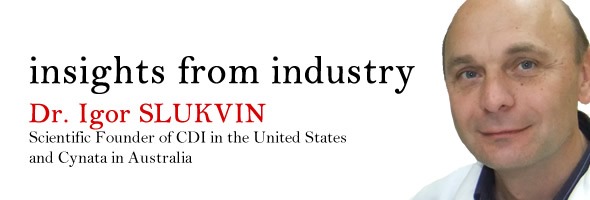
What are stem cells and are there different types?
Stem cells have a potential to develop into multiple cell types and divide without limit to replenish cells in human body throughout the life of individual.
There are two major types of stem cells embryonic and adult stem cells (also called somatic stem cells). Adult stem cells reside within different organs and usually regenerate tissue in locations where they live in. Adult stem cells can be differentiated into multiple cell types and therefore called multipotent stem cells.
In contrast, embryonic stem cells are capable to produce any type of cell found in a human body. That is why embryonic stem cells are called pluripotent stem cells.
When were embryonic stem cells first isolated and how has our understanding of them developed since then?
Human embryonic stem cells were first isolated in 1998 by James Thomson at University of Wisconsin, Madison. This discovery significantly elevated the interest in stem cell biology because many viewed embryonic stem cells as unlimited source of cells for regenerative medicine.
Advances in understanding embryonic stem cells soon led to another discovery by Shinya Yamanaka at Kyoto University who demonstrated in 2006 that adult somatic cells can be turned into embryonic stem-like cells, so called induced pluripotent stem cells.
Please can you give a brief introduction to the new stem cell platform technology you helped to invent?
In my laboratory we study differentiation of pluripotent cells toward blood and vascular cells. In 2010 we identified a novel multipotent progenitor mesenchymoangiobalst (MCA) which formed during differentiation of human pluripotent stem cells in a culture dish.
The MCA has a capacity to produce variety cell types, including major components of blood vessels (endothelial cells which form blood vessel lining, pericytes which stabilize small vessels, and smooth muscles a major component of large vessel wall) and mesenchymal stem cells (MSCs) with a potential to produce bone, cartilage, and adipose tissue.
Because pluripotent stem cells can expand prodigiously, our technology makes it possible the scalable manufacturing of different types of vasculogenic cells and MSCs.
At what stage of development is this technology currently at?
Melbourne-based company Cynata acquired intellectual property related to MCA technology from WARF with the goal to advance this technology into the clinic.
Currently we are at pre-clinical stage. The Cynata anticipates planning for a Phase 1 clinical trial to occur during late 2014.
What impact do you think this technology will have on the therapeutic potential of stem cells and regenerative medicine?
This technology makes it possible to produce many different types of cells for cellular therapies, including mesenchymal stem cells (MSCs). MSCs generated a great deal of interest because their potential to encourage the regeneration and repair of the damaged tissue and reduce inflammation.
Multiple clinical trials were initiated to test the use of MSCs for treatment of variety of medical conditions. However, commercial-scale manufacture of current MSC products is a major practical and regulatory challenge, because limited expansion potential of adult stem cells and significant donor-to-donor variations.
Our technology enables the unlimited production of uniform, pharmaceutical grade MSCs from a single donor. This means easier regulatory route, easier manufacturing, and greater clinical predictability.
How have stem cell therapies changed over the years and what hurdles still need to be overcome?
During the last decade significant progress has been made in understanding stem cell biology and their differentiation toward particular cell type. Multiple clinical trials have been initiated to explore potential of MSCs and other types of adult multipotent stem cells to heal tissue damage and reduce inflammation.
The next significant challenge is to use pluripotent stem cells to generate tissues for transplantation. To be used for transplantation, we need to find the way to produce cells that integrate into the recipient organs and function properly throughout the duration of life recipient’s life.
Only few clinical trials have been initiated with cells derived from pluripotent stem cells. It will be critical to demonstrate the safety of pluripotent stem cell-based therapies.
Why do you think an increasing number of biotechnology companies are concentrating on developing stem cell therapeutics?
Aging population and the rise in chronic degenerative diseases dictate the need for novel therapies to regenerate the damaged tissue. Stem cell technologies have a potential significantly improve management of medical conditions associated with tissue damage.
What do you think the future holds for stem cell therapy?
Stem cell therapies are rapidly developing. Recently significant effort has been made to translate pluripotent stem cell technologies into the clinic. I am sure that within several years we will see more clinical trials with stem cell therapies.
Recently, Japanese government approved the law that provide rapid approval process for human stem cell-based therapies. This law will facilitate swift translation of novel stem cell technologies into the clinic.
Where can readers find more information?
Readers can find more information about stem cells at www.stemcellsaustralia.edu.au/ and can find information about the Company at www.cynata.com
About Professor Igor Slukvin
 Igor Slukvin is Associate Professor of Pathology and Cell and Regenerative Biology at the University of Wisconsin-Madison, USA. His research interests focus on development of hematopoietic, vascular and mesenchymal lineages from human pluripotent stem cells.
Igor Slukvin is Associate Professor of Pathology and Cell and Regenerative Biology at the University of Wisconsin-Madison, USA. His research interests focus on development of hematopoietic, vascular and mesenchymal lineages from human pluripotent stem cells.
He has published more than 70 papers and holds key patents in the area of hematovascular cell production from human pluripotent stem cells.
Dr. Slukvin is a scientific founder of CDI in the United States and Cynata in Australia.